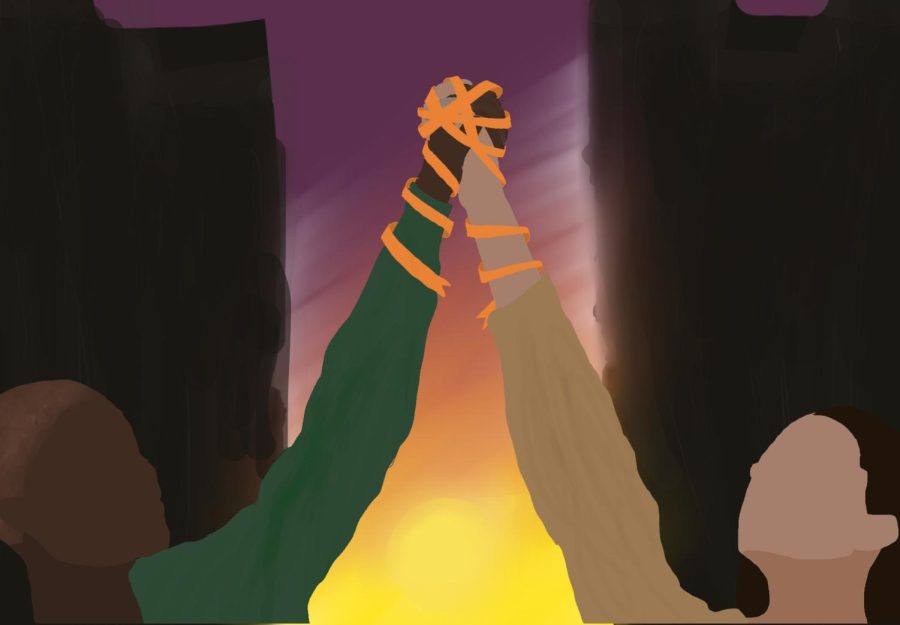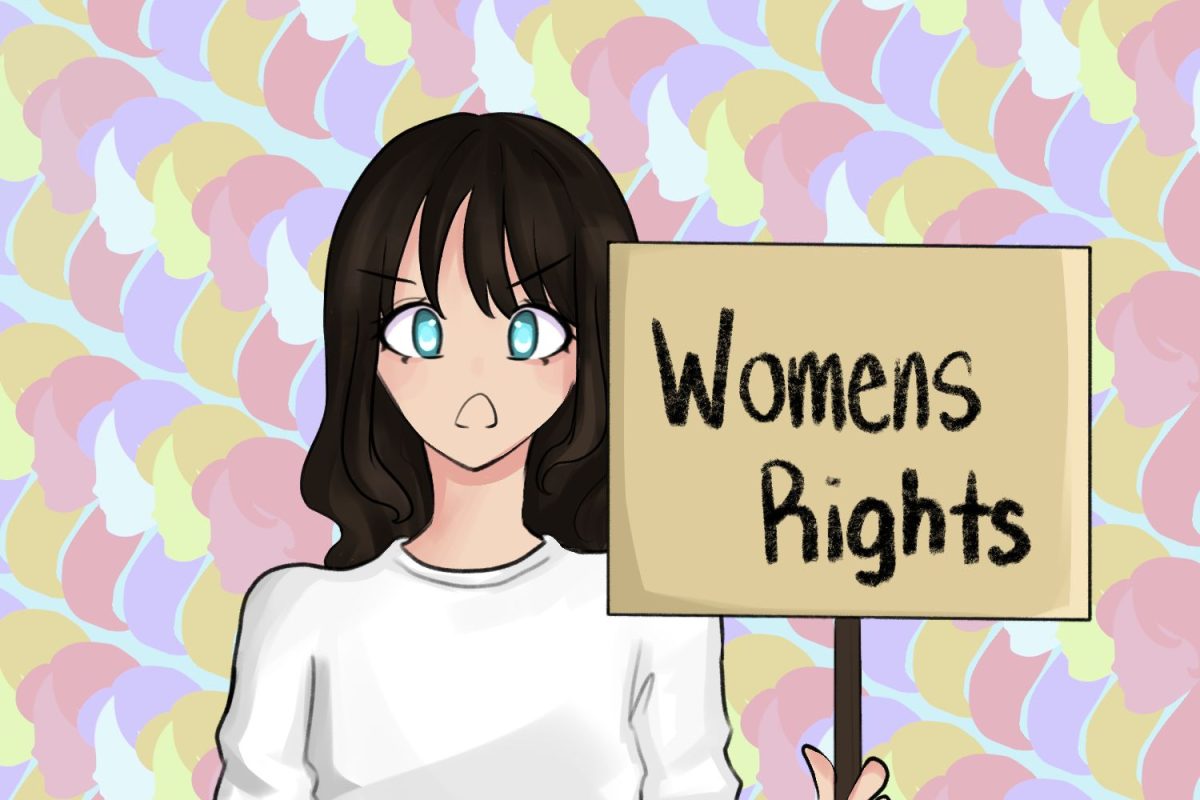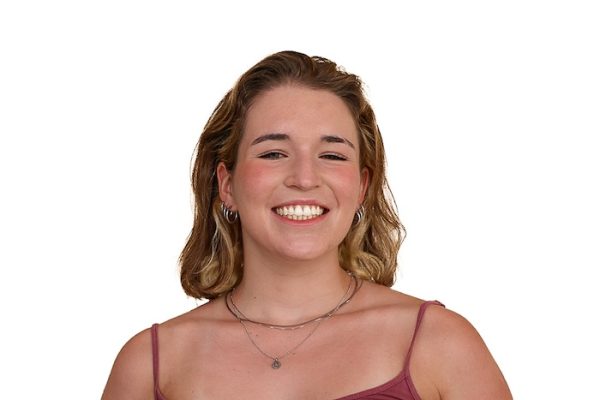National Gun Violence Survivors Week celebrates its fifth anniversary as a time to honor and recognize individuals and communities affected by armed violence.
According to Moments that Survive, the first week of February marks the approximate time in the year when gun deaths in America surpass most other countries. This platform provides gun violence survivors and victims’ loved ones a safe space to share their stories.
It was created by Everytown for Gun Safety, the largest gun violence prevention organization in America, to be a centerpiece of National Gun Violence Survivors Week. Everytown also created Moms Demand Action and Students Demand Action, both of which are movements involved in fighting for public gun safety measures across America.
Johanna Thomas, a licensed clinical social worker and avid volunteer with Moms Demand Action, describes the gun violence epidemic in America as a public health crisis because of its scale, unpredictability, and health consequences.
“It’s critical to recognize that survivors of gun violence have been personally impacted in very devastating ways, but we as a nation are also experiencing collective trauma. Nowhere is safe anymore,” Thomas said. “Part of understanding is recognizing that this is a public health issue.”
Protests and calls to action to reduce gun violence in America and help survivors share their stories have assembled more support for the movement, which has opened the doors for change at the political level.
Congresswoman Kim Schrier was able to help pass the Bipartisan Safer Communities Act, which enacted changes to mental health systems and gun safety laws because of the increased support and louder demands for change. She also helped pass an Assault Weapons Ban, which would effectively make it illegal to possess or sell any semiautomatic assault weapons, through the House.
“They may not go as far as I personally would like to see or many of you would like to see,” Schrier said. “But it made it through and will save lives. It’s also the first time we’ve been able to do this in a generation.”
The new generations are a leading force in protests to end gun violence and implement stricter gun laws in America. Young leaders, many of whom have been personally affected by gun violence, are driving movements and demanding change because of their firsthand experience of how gun violence has impacted themselves and their communities.
According to Everytown, more than 100 Americans are shot and killed, and hundreds more are injured daily. Firearms are the leading cause of death for children and teens in the United States — 3500 are killed, and 15,000 are wounded annually. In addition, three million children in America witness gun violence every year.
“As young people, we have grown up in the midst of the gun violence epidemic, but many of us are leading the way in advocating for solutions,” said Ashley Castillo, a member of the Students Demand Action National Advisory. “We are a community of people who have experienced a shared trauma, and now we are fighting together to create change. We are uplifting other voices, not just our own, and we are receiving that support and providing that support for others.”
Taina Patterson, an Everytown Student Survivor Fellow and gun violence activist, believes that loud advocacy is the first step toward ending gun violence in America. Garnering the support of more students and survivors would raise the voices of activists all over the country to be louder than the gun industry and lawmakers that don’t support safety legislation so legal and social change can advance more.
“When you pick up a gun, and you shoot someone, you’re not only just shooting that person, but they’re taking away someone’s spouse, you’re taking away someone’s sibling, you’re taking away someone’s daughter, son, someone’s husband and wife, said Jakoby Mitchell, an Everytown Student Survivor Fellow and an activist with Students Demand Action. “This goes beyond just shooting someone; it takes a loved one away for the rest of their life.”
According to the Centers for Disease Control and Prevention, people of color and the LGBTQ+ community are disproportionally affected by gun violence. Young black Americans have the highest gun death rates across all other demographics. LGBTQ+ are more than twice as likely to be affected by gun violence, according to a National Crime Victimization survey. In addition, almost 20% of hate crimes in America are prompted by gender or sexuality bias.
“We need to ensure that every single person is protected, we are saving lives, and we are being as equitable as possible,” said Zachary Mallory, an Everytown Survivor Fellow and LGBTQ+ mental health advocate. “Let’s turn this into something that we can look back on, and our future generations can look back and see where we have come far as a country. I don’t want them to grow up in a world where you have to be afraid to be who you are. Be yourself, love yourself, and be you.”
The United States has recently implemented more laws around who can own a firearm, background checks when purchasing them, bans on assault weapons and high-capacity magazines, and increased funding for mental health services and school security.
The Harvard Injury Control Research Center found that states that follow these stricter gun control laws and implement their own have reported fewer firearm deaths than states with looser laws; however, gun violence in America is still at an all-time high. Even California, a state with some of the tightest gun laws, experienced seven mass shootings in 2023.
“Our job is not done, you know, it’s not done because gun violence is still a problem that we’re still facing,” Mitchell said. “Let’s hold each other’s hand; let’s walk through it. Let’s fight. And let’s not give up.”












